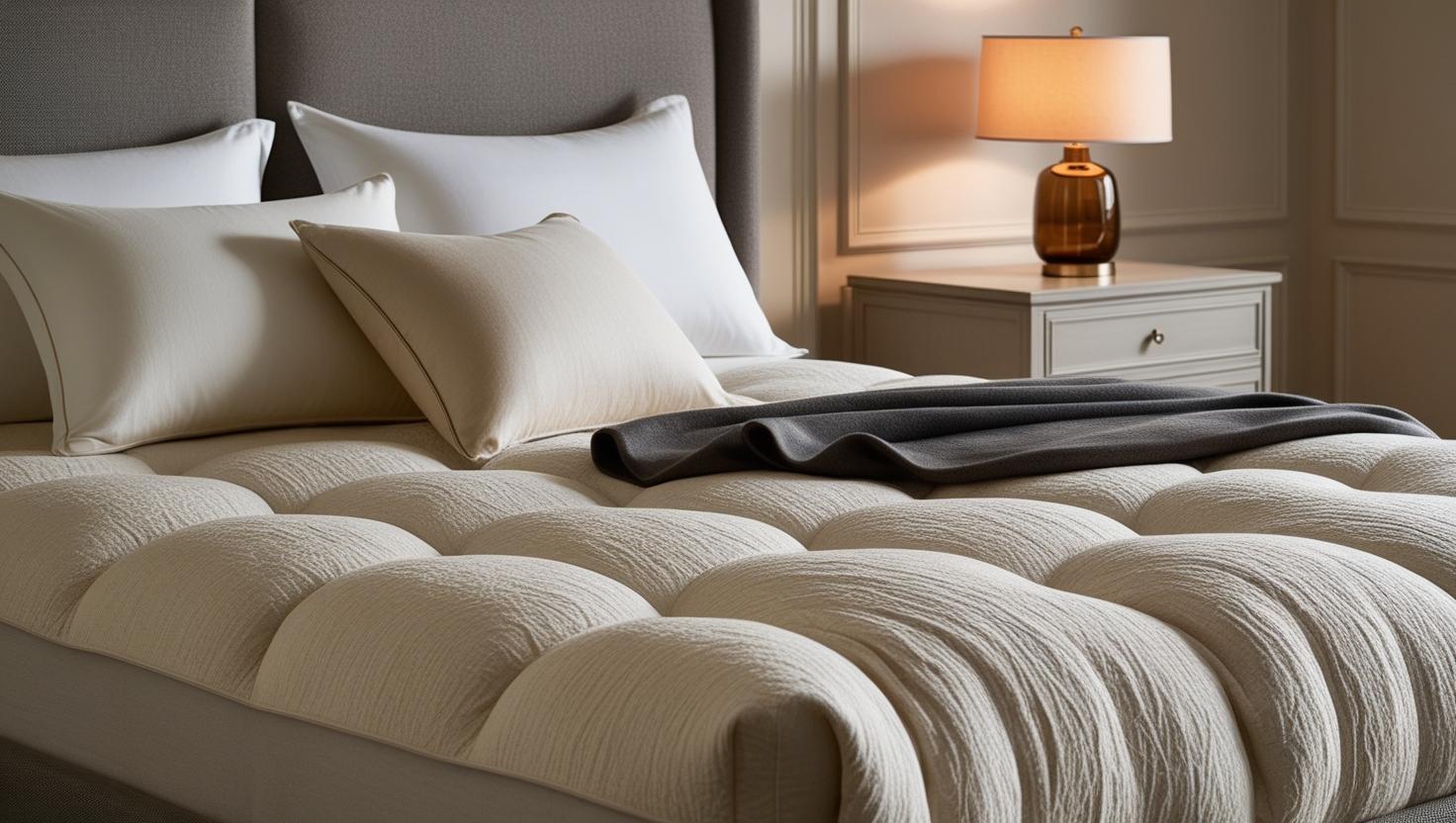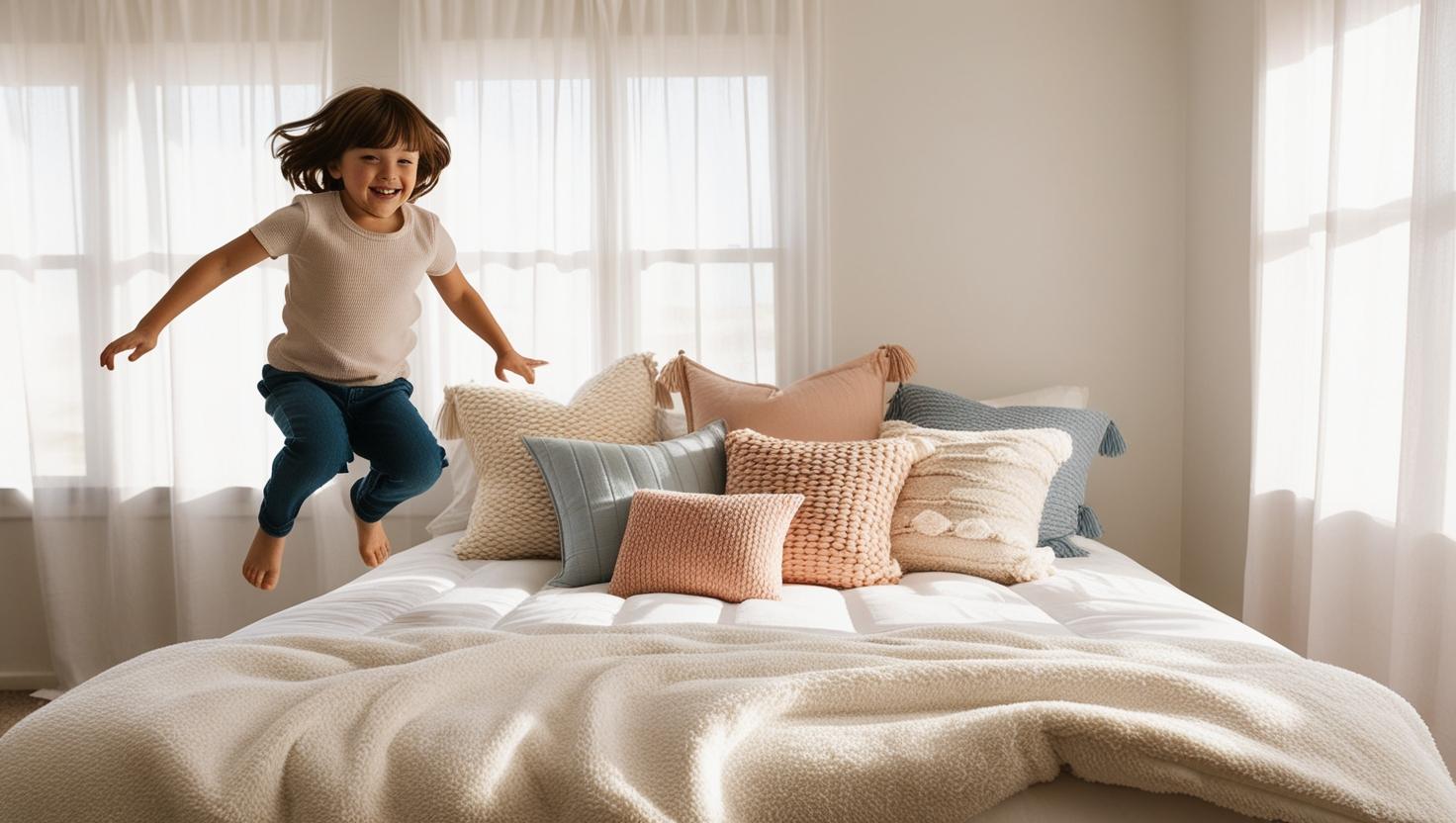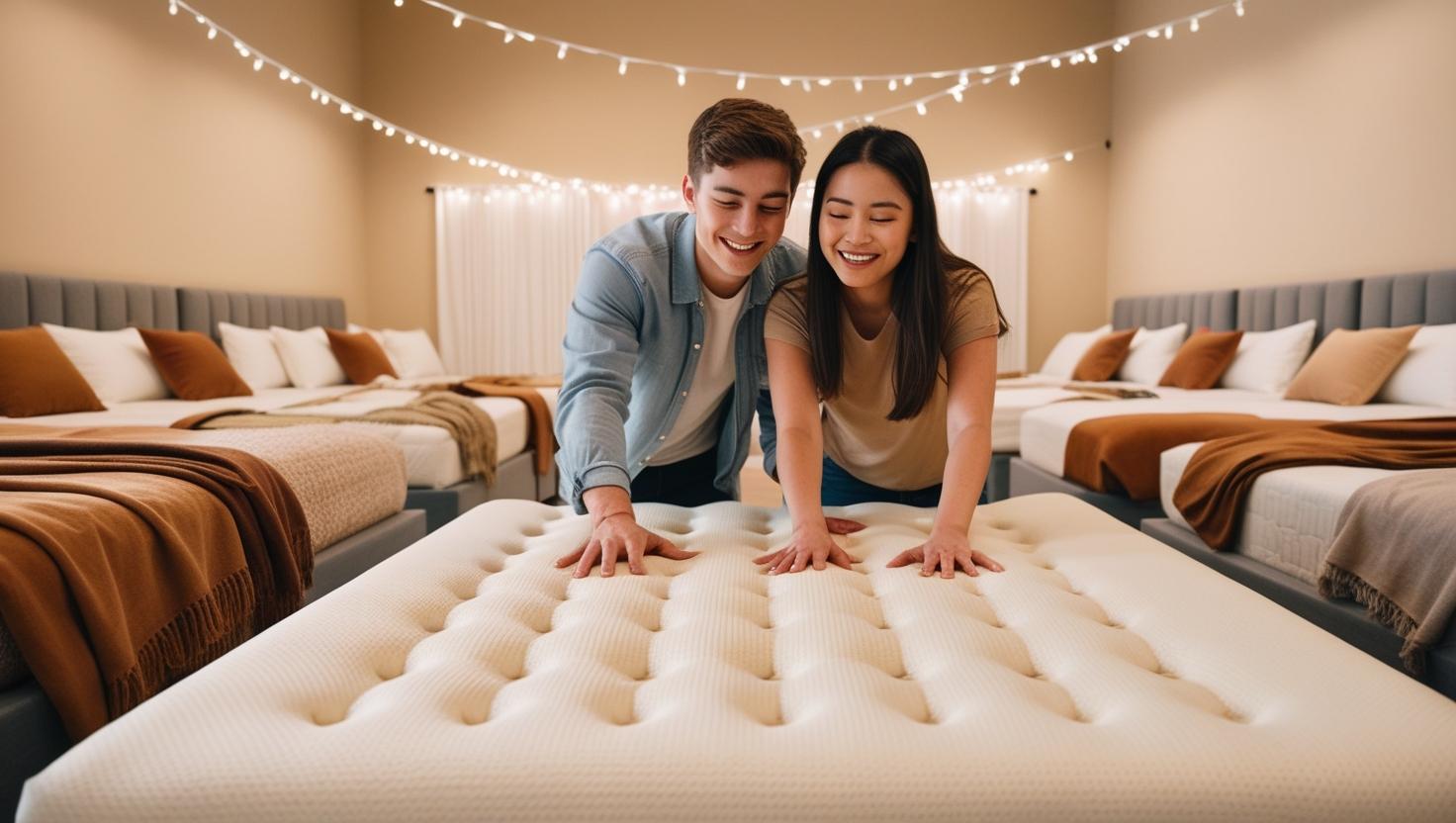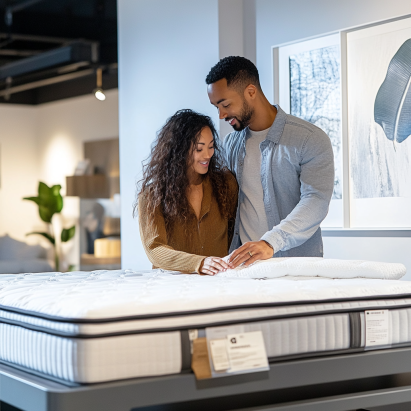Best Mattress Types
Finding the best mattress types for your body and sleep style can transform your nights. Discover top options and how to choose what’s right for you.
Key Takeaways
- The right mattress can reduce pain, improve sleep quality, and boost energy.
- Best mattress types include foam, hybrid, innerspring, and latex.
- Sleep position and body weight are key in choosing the best type.
- Cooling technology and firmness level play major roles.
- Online shopping with sleep trials makes testing easy and risk-free.
Why Your Mattress Matters More Than You Think
We spend nearly a third of our lives sleeping, so your mattress isn’t just furniture—it’s a foundational part of your wellness. The best mattress types promote proper alignment, relieve pressure, and support deep rest. A worn or poorly matched mattress can lead to aches, poor posture, and fragmented sleep.
Want a bedroom that works with your mattress? Check out our guide to the coziest bedding essentials that complement every sleep style. For more detailed comparisons, read our memory foam vs. latex vs. innerspring mattress breakdown.
If you’re unsure where to start, explore the Sleep Foundation’s guide to choosing a mattress or browse through Sleepopolis’s expert advice for helpful comparisons.

The 7 Best Mattress Types (And Who They’re Perfect For)
1. Foam Mattress
Pros: Excellent motion isolation, cradles pressure points.
Cons: Can retain heat, may have an initial odor.
Best for: Side sleepers and joint pain sufferers. Memory foam is one of the best mattress types for pressure relief and comfort. It contours to your body, minimizing motion transfer—making it great for restless partners. While traditional memory foam tends to sleep warm, newer models incorporate cooling gel or plant-based foams to reduce heat retention.

2. Innerspring Mattress
Pros: Great airflow, strong edge support.
Cons: Less contouring, potential noise.
Best for: Back or stomach sleepers who need a firm, cool bed. Innerspring designs are among the most breathable best mattress types available. With steel coils providing a supportive base and often a plush top layer, they deliver that “sleeping on top” feel. They’re also a solid choice for people who prefer a more traditional mattress experience.
3. Hybrid Mattress
Pros: Balanced feel, responsive, ideal for couples.
Cons: Higher cost.
Best for: Mixed-position sleepers. Hybrid beds combine the strengths of various best mattress types. A hybrid typically features pocketed coils for support and memory foam or latex layers on top for pressure relief. This design suits sleepers who change positions at night and those wanting cushioning with bounce. See our luxury mattress roundup for the best premium hybrids.
4. Latex Mattress
Pros: Hypoallergenic, durable, eco-friendly.
Cons: Heavy, expensive.
Best for: Green-minded buyers. Natural latex stands out among the best mattress types for sustainability and durability. Latex offers a buoyant feel that supports without too much sinkage. It’s also naturally resistant to dust mites and mold, making it great for allergy-prone sleepers. Dunlop and Talalay are the two main latex types—each offering a unique firmness and feel.
5. Airbed Mattress
Pros: Adjustable firmness, customizable support.
Cons: Maintenance required, potential leaks.
Best for: Couples with differing preferences. Airbeds are flexible, customizable best mattress types. Many come with dual chambers, so each sleeper can adjust firmness independently. Some advanced models even let you adjust zones (head, back, feet) separately. While they require a pump and occasional maintenance, the ability to fine-tune your comfort makes airbeds highly appealing.
6. Pillow-Top Mattress
Pros: Ultra-soft surface, luxury feel.
Cons: Can wear down over time.
Best for: Side sleepers craving plushness. A pillow-top is one of the best mattress types for cushioning shoulders and hips gently. It features a thick, soft layer stitched to the top of the mattress, creating a cloud-like feel. While not ideal for stomach sleepers, pillow-tops offer great comfort for those who prefer a softer, sink-in sensation without sacrificing underlying support.
7. Gel-Infused Foam Mattress
Pros: Cool sleep surface.
Cons: Pricier than standard foam.
Best for: Hot sleepers. Gel foam blends cooling with the contouring benefits of the best mattress types. These mattresses infuse cooling gel beads or layers into memory foam to draw heat away from the body. Some also use open-cell structures for added airflow. They’re an excellent choice for anyone who loves the comfort of foam but dislikes sleeping hot. Learn more in our complete mattress selection guide.
Matching Your Mattress to Your Sleep Style
Back Sleepers
Medium-firm latex or hybrids are some of the best mattress types for promoting spinal alignment and reducing discomfort.
Side Sleepers
Memory foam or pillow-top beds remain top best mattress types for pressure relief. Consider size options with our complete bed size guide.
Stomach Sleepers
Innerspring and firm hybrids are effective best mattress types to prevent midsection sinking and preserve posture.
Cooling: A Crucial Mattress Feature
If you overheat at night, go for gel-infused foam or latex. These best mattress types help regulate temperature for uninterrupted rest.
According to the Sleep Foundation, cooling innovations in the best mattress types enhance sleep efficiency and quality.

Clearing Up a Common Myth: Firmness vs. Support
Firmness is how a mattress feels, while support relates to alignment. The best mattress types deliver both when properly chosen for your body.
Cozy Tips for Buying Online
Use trial periods like our 100-night mattress trial to test risk-free. Read verified reviews, check return policies, and enjoy the convenience of mattress-in-a-box delivery.
Looking to enhance your current bed? Explore the best mattress toppers to pair with any of the best mattress types. Not sure what size fits your room? See our mattress size and dimension guide.

Finding your perfect bed starts with understanding the best mattress types and matching them to your sleep needs. Take our quiz and step into restful nights with comfort that lasts.
FAQ
- What is the most recommended mattress type?
- Hybrid and foam mattresses are commonly recommended for their balance of support, comfort, and versatility.
- Which mattress is best for back pain?
- Latex and medium-firm memory foam mattresses are the best mattress types for back pain relief and spinal alignment.
- Are expensive mattresses always better?
- Not necessarily. The best mattress types offer quality materials and construction regardless of price. Focus on fit over cost.













